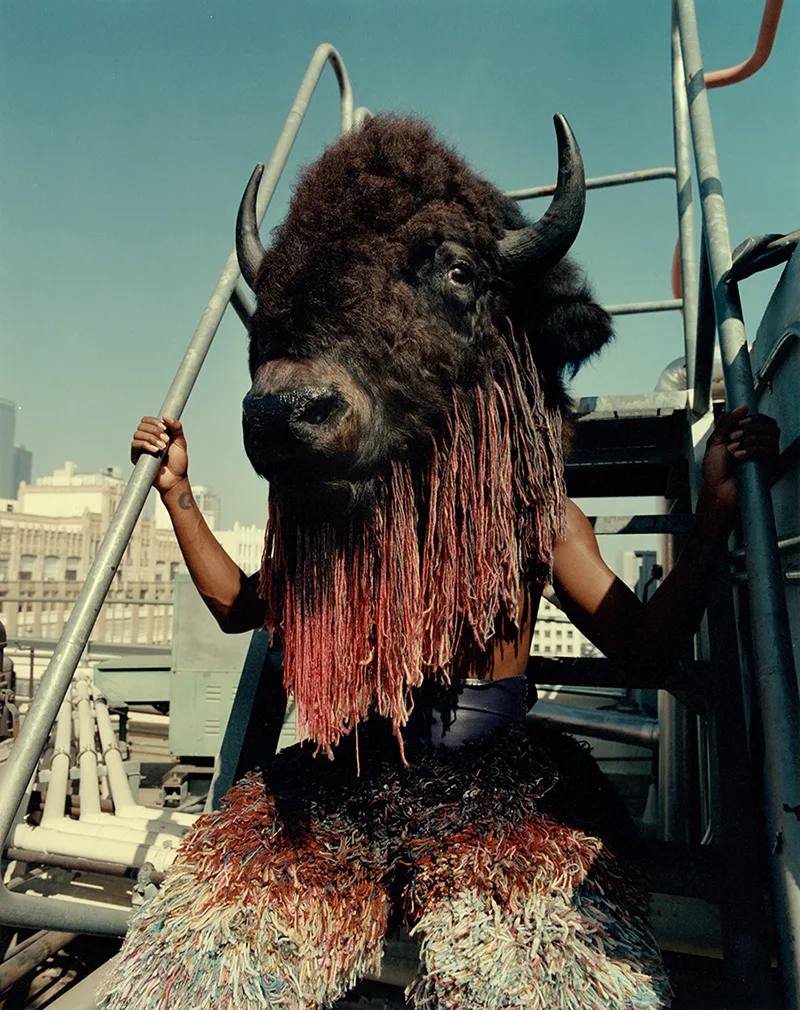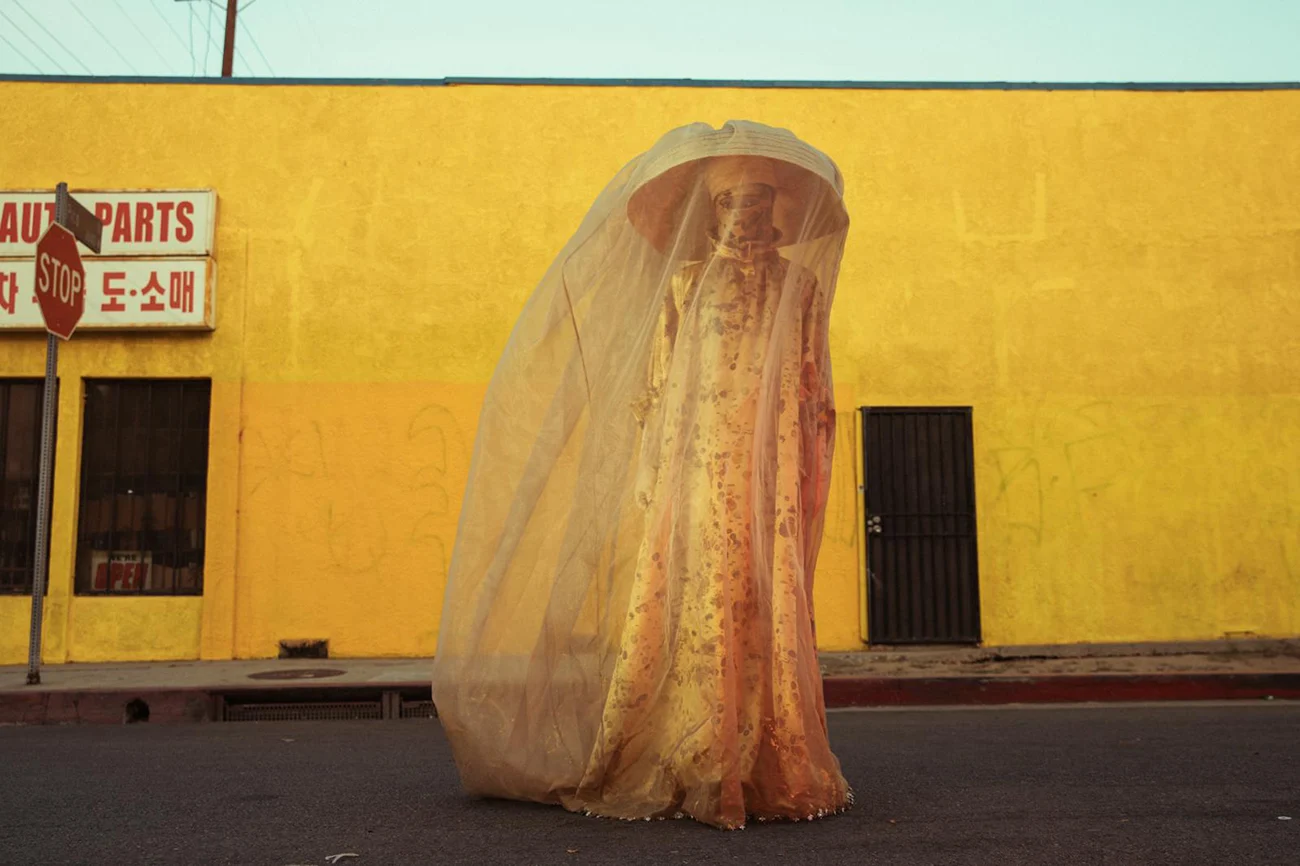
As the United Nations’ Intergovernmental Panel on Climate Change releases another damning report about the ramifications of our failure to address global warming, the discourse about what can be done to undo the damage can be confusing. Filmmaker and architect Liam Young’s film Planet City goes beyond the short-term fixes and imagines the sprawling, futuristic city that could house the world’s entire population in a sustainable way. He tells Alyn Griffiths that, even though the city he’s created is a fictional future, it offers examples of real lifestyle changes we may have to make, and aims to inspire honest conversations about what we can really do to give the planet’s story an alternative ending.
As a self-proclaimed “world builder,” the LA-based filmmaker and architect Liam Young creates visions of the future based on some of the scarier truths about urban life today. His latest project – a beautiful and surreal 16-minute animated film titled Planet City – depicts a day in the life of a futuristic mega-metropolis housing 10 billion people. Both dystopian and utopian, Planet City illustrates the extreme measures humankind may have to take to combat the many problems arising from rampant urbanization.
“We all know that the world is ending and we’re doing nothing about it,” says Liam, with discernible urgency in his voice. “We don’t need another IPCC report to tell us that we’re fucked.” The recent report Liam refers to was released by the United Nations’ Intergovernmental Panel on Climate Change and paints a bleak picture about our failure to address the widespread and intensifying threat of human-induced global warming. Governments and corporations often claim that new technologies will come to the rescue and allow us to live more sustainably in the future, but Liam believes it’s already too late to turn to technology for solutions.
“Hopefully one of the takeaways from Planet City is that climate change is no longer a technological problem,” he says. “In fact, the technologies and systems required to regenerate and support the climate are already here. The frontline of climate change is actually a cultural battle so we tried to make a work that sparks a cultural conversation about the lifestyle changes that might be required to sustain human life on the planet.”
We all know that the world is ending and we’re doing nothing about it.
Planet City came about following a commission from the National Gallery of Victoria in Melbourne, Australia, which invited Liam to develop work in response to the theme of climate change for the NGV Triennial 2020. Liam developed a proposal which sees the entire projected population of the Earth in 2050 housed in “a hyper-dense, self-sufficient and circular metropolis” that would allow the rest of the planet to regenerate itself through a process of re-wilding. Planet City explores the productive potential of extreme densification, and demonstrates what the world might look like if we managed to reverse the current process of planetary sprawl.
“Based on the population density of the densest cities today, we propose housing ten billion people in a city that occupies just 0.02 per cent of the Earth’s surface,” explains Liam. “Taking the processes of de-growth, retreat, consolidation and densification to their most extreme and pragmatic end point, we end up with Planet City.”




The project takes several forms, including the short film depicting a day in the life of Planet City. Set to an ambient, synthy soundtrack by producer and composer Forest Swords, it depicts scenes of imagined urban landscapes interspersed with surreal visions of the characters who might live and work in the ever-evolving metropolis. Dressed in outfits created by Ane Crabtree – the designer behind costumes seen in hit movies and shows, including Westworld and The Handmaid’s Tale – we witness bot herders, algae divers, drone shepherds and harvest bots dancing as if participating in a carnival procession that weaves its way through the city.
The ideas and technologies presented in Planet City were generated by what Liam calls a city council: a global network of scientists, technologists, economists and political theorists who contributed their expertise to ensure the vision is grounded in reality. A team of visual effects specialists then developed the computer-generated scenes depicting various districts within the city. “Unlike most science fiction, there’s no imagined technology in Planet City – everything you see already exists today,” explains Liam when asked why the city looks the way it does. “All we did was remove the political roadblocks or the lack of cultural investment that holds these technologies back, and then we visualized how they might operate at this planetary scale.”
The technologies and systems required to regenerate and support the climate are already here.
Each scene in the film tells a story about how the metropolis would be created and how it would function. As we move through the layers of the city, we see the high-density fruit farms that provide food for the population, as well as the vertical walls of solar panels that generate the city’s energy. One of the criticisms leveled at renewable energy is that the power it provides is not consistent and requires hugely resource-intensive battery systems to support it.
Liam worked with experts in pumped-storage hydropower to show how energy generated by solar panels and wind turbines could be used to pump water into high-altitude holding lakes. A system of dams would then provide hydro power at times of peak demand. The lakes also become algae farms and fish farms that produce food for the city. Food waste is then converted by bioreactors into fish food that goes back to the fish farms, forming a circular system. Everything in this fantastical future world is rendered in shades of pinkish-purple, resulting from the combination of red and blue light required to support the growth of plants through photosynthesis.
Planet City is a thought-experiment intended to provoke discussion, rather than a practicable solution to issues associated with urbanization and climate change. Yet when speaking to Liam about it, you quickly come to appreciate how thoroughly researched and realistic the project is. An accompanying book produced alongside the film contains a collection of fiction and non-fiction writing that brings the research to life and tells stories about the daily lives of Planet City’s inhabitants.
Experts in ecological economics talk about how a process of “degrowth” could replace capitalist economies with values such as caring, leisure, social or spiritual activities, while academics argue about the pluralistic legal system required to maintain order in a city containing all of the world’s cultures, histories and ideologies in one place.
Based on the thousands of views, clicks and comments Planet City has already racked up, it would appear the project is succeeding in its main mission to spark debate and encourage alternative thinking.
Whether or not you feel that living in a mega-metropolis along with the rest of humanity is an attractive or appropriate response to the problems currently facing the world, this fictional future is captivating and terrifying in equal measure. And, as Liam himself succinctly suggests: “Fictions are vessels for important ideas. We don’t need more charts and graphs to show us what’s going wrong with the world, we need to dramatize data to get people emotionally engaged enough to start making lifestyle changes that will really make a difference."
You can listen to Liam's Ted Talk on Planet City here.

